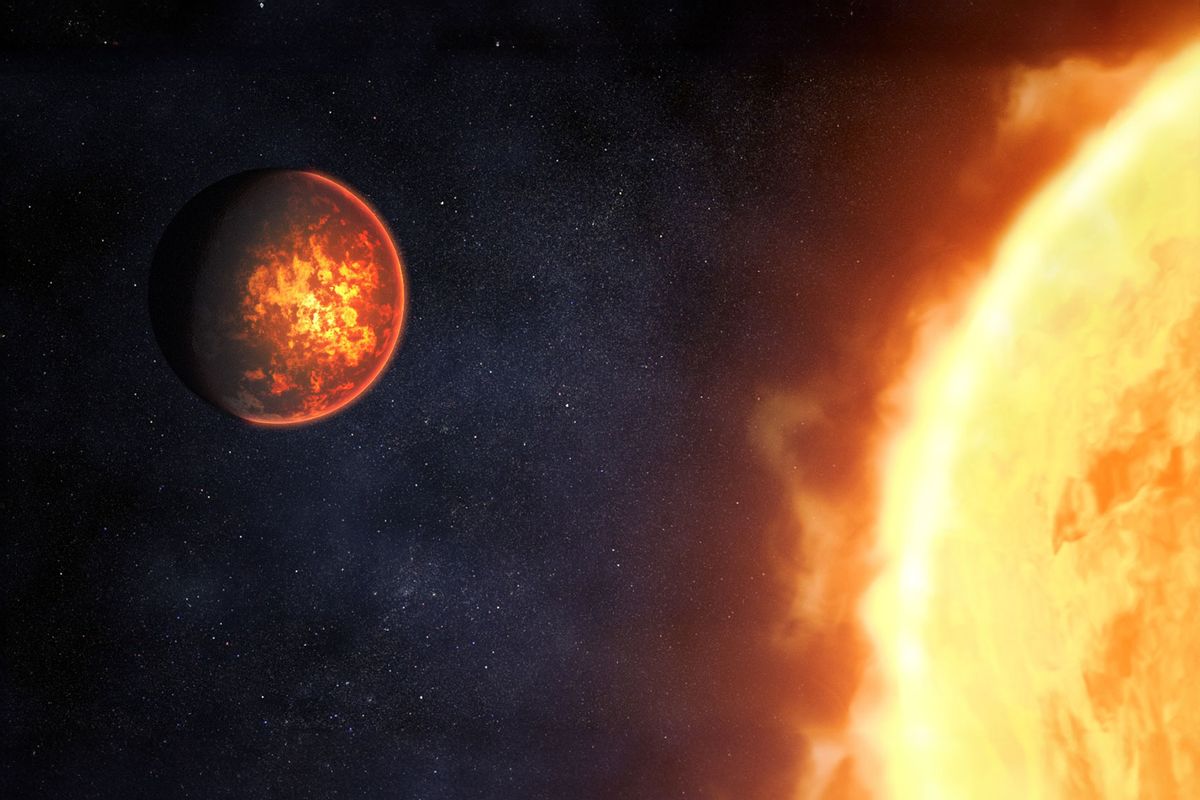Like a giant exploding ember floating in space, a planet made of molten lava and covered in active volcanoes was recently described in The Astronomical Journal. Known as TOI-6713.01, the exoplanet was first spotted by UC Riverside astrophysicist Dr. Stephen R. Kane using NASA’s Transiting Exoplanet Survey Satellite, or TESS. It is part of a star system known as HD 104067, one which is already roughly 66 light years away from our sun.
Like Earth TOI-6713.01 is a rocky planet, but it is almost one-third larger than our home and has a temperature of 2,600 degrees Kelvin, making it hotter than even certain stars. The properties of TOI-6713.01 are perhaps most similar to those of the Jovian moon Io, where scientists recently discovered a lava lake as smooth as glass.
“This is a terrestrial planet that I would describe as Io on steroids,” Kane said in a statement about TOI-6713.01. “It’s been forced into a situation where it’s constantly exploding with volcanoes. At optical wavelengths you would be able to see a glowing, red-hot planet with a molten lava surface.”
TOI-6713.01 has all of this volcanic activity in part because of its unusual orbit. Two other planets in TOI-6713.01's vicinity are constantly squeezing and pushing on it in an effect called tidal energy, crushing its surface and giving it an extremely eccentric orbit. The end result is similar to two people swatting a ball with their paddles so often that, despite its massive size, it becomes disfigured.
"The new planet has a mass similar to Uranus and is in an eccentric ∼14 days orbit," the scientists write.



Shares